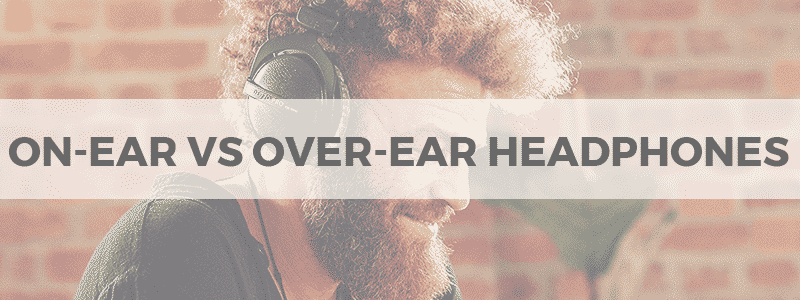
There might be very few sweeping generalizations as inarguable as the fact that everybody likes listening to music in one form or another, with over 50% of people describing themselves as ‘loving’ music or being ‘fanatical’ about it.
Some people might not have favorite bands or albums, but they’re avid radio listeners. Some prefer rock, some listen to EDM, and some might like Celtic Christian instrumental hymns performed exclusively at mass, but you’d be hard-pressed to find someone who doesn’t like music or have a known preference.
This preference decides how people listen to their music. Some want the full immersive experience to escape their surroundings (such as with noise-canceling headphones), some want something to drown out the noise as they work, and some are active listeners of the music and melodies.
For this, we have all sorts of different types of headphones.
This article will focus specifically on two of these numerous types: on-ear and over-ear headphones. The differences in on-ear vs over-ear headphones will be discussed, the benefits determined through an on-ear vs over-ear debate, and the specific factors that help us classify over-ear vs on-ear headphones.
Over-ear Headphones
These are what you might quintessentially identify as “headphones” in your mind’s eye as soon as someone mentions them.
Over-ear headphones are generally the best-sounding (and the least portable) owing to their sizes, sturdy build, and focus on an experience instead of simply being a means to an end. This means they’re usually reserved for dedicated use, not for something to casually wear while walking in a crowded area or crossing the road.
What does it mean to be the best-sounding? We usually see this in terms of reproducing a wide range of frequencies and being able to fully exhibit multiple values on audio bands simultaneously. Over-ear headphones achieve this because they have the largest drivers and the sound source completely envelops the receiver (your ears).
On-ear Headphones
As the name suggests, these headphones rest on the ears (if you’re comparing on-ear vs over-ear, this means that they rest directly against or on the top of the ear as opposed to enveloping it completely).
On-ears are sometimes preferred for their ability to come in foldable models. This means there’s increased portability as compared to the larger, over-ear headphones, as well as better sound quality than you’d get with in-ear headphones (earbuds, AirPods, and so on).
On-ears are also preferable to in-ears since they fall in a similar price range but perform better, meaning that it’s then on in-ears to prove their usefulness to you, depending on your needs.
Over-ear vs On-ear Headphones
These differentiating features define the function that these headphones facilitate.
However, brands and specifications of each model matter, meaning it pays to make research into whatever you’re eyeing to buy. There are different tools for testing headphones online, in addition to articles such as this one right now to help you refine your own needs.
On-ear headphones (also called supra-aural) usually work best for the casual listener who needs music to get through their day. For dedicated musicians, avid fans and aficionados of aural aesthetics, over-ear headphones (also called circum-aural) have the best sound quality.
The earpads of an on-ear model also start hurting most people, experientially speaking, after prolonged use or in harsher weather conditions, particularly where it’s colder.
In contrast, over-ear headphones don’t really lie against your ear as much as comfortably snuggling themselves over them, meaning that it’s rather more like a blanketing experience than a possible nuisance.
However, over-ear headphones might easily get to be a chore to lug around on your head, including worry about the faux-leather (or worse, velour) padding wearing out quicker, especially as they tend to run hotter than other models. This might lead to aftermarket ear cushions being needed.
Over-ear headphones also invite a whole new debate simply beyond over-ear vs on-ear: the case of open-back versus closed-back models… but this might be enough for today.
Conclusion
You now have a fully workable knowledge of a comparison between these two types, meaning you should have been able to come to a side on the previously-confusing on-ear vs over-ear headphones decision.
